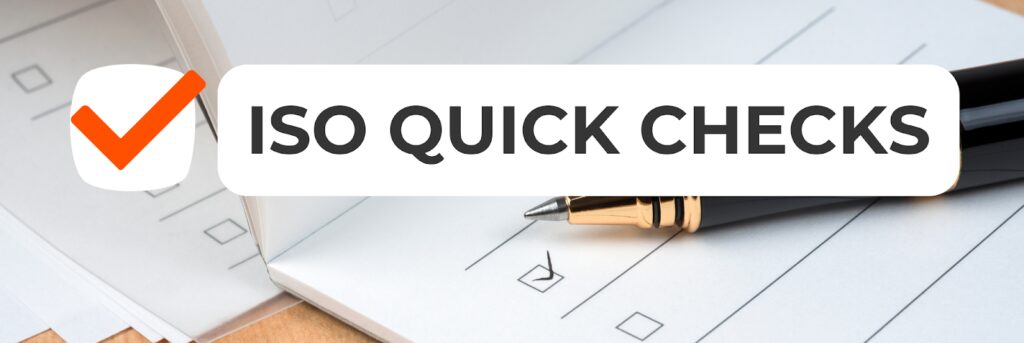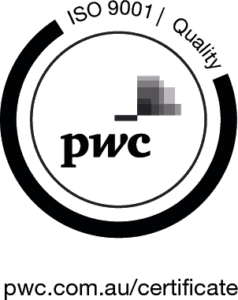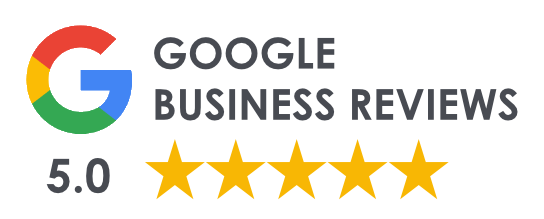How Agile Can Improve Quality in Any Business
When we hear about Agile methodology, usually our first thought is IT Business and Software development organisations. But the truth is that Agile is also a great methodology to support Quality Management Systems development, implementation and improvement in any business.
In a nutshell, the Agile manifesto (often referred to as the Agile Methodology) is a set of principles for an iterative approach to project management to develop solutions through collaborative effort. The goal is to deliver the project incrementally rather than all at once in order to respond quickly to issues and unpredictability.
Often, International Standards such as ISO are perceived as a quality relic, referring to archaic manufacturing organisations with rigid business structures. However, the latest edition of ISO 9001:2015 allows for flexibility and the potential of this standard has not been fully utilised by many organisations.
Agile and Quality

So, let’s walk through how the Agile principles could support a Quality Management System and the benefits that organisations gain from implementing those principles within their businesses.
To start, the Canadian engineer and author Scott W. Ambler, who led the development of Agile methodologies, has further explained the four simple rules of Agile in a way that is easier to grasp:
- Tools and processes are important, but it is more important to have competent people working together effectively.
- Good documentation is critical, but bear in mind that the main point is to deliver the product or service, not the documentation.
- Although having a contract is imperative, it is not a substitute for working closely with customers to find out what they need, and be flexible to deliver what is expected.
- Have a good project plan, but be mindful to accommodate changes in technology or the environment, stakeholders’ priorities, and people’s understanding of the problem and its solution.
You don’t necessarily need to implement the Agile framework in your business, but you should consider some aspects of Agile that can improve your business processes and help you to achieve more flexibility and resilience in your projects.
The following subjects will look into specific business functions and how they can benefit from the Agile concepts.
Leadership and Culture
Let’s begin with leadership and management, since, without developing the right culture, becoming ISO Certified or more Agile would never be possible.
Recognising that, ISO 9001 puts a lot of emphasis on the leadership topic. Management is the place where everything starts or everything ends. The collective direction is one of the core organisation capabilities (Adler, 2012), and is undoubtedly the key to adopting the requirements of the ISO 9001 Standard.
The right organisational culture can’t be created without support that is aligned with the company’s vision and mission. Leadership and commitment are the fuel and energy of every business and are critical elements for nurturing the right principles and values. For reflection, ask yourself the following questions:
To drive any change in the business and improve the company’s overall resilience, your management team must become more open-minded and shift the approach from managers to servant leaders.
A stakeholder analysis is recommended to identify their needs and expectations while understanding their powers and interest in the business, thus providing them with suitable support and training.
Expert Tips
External Environment
Understanding your position in the market, and being constantly aware of dynamics within the external environment are crucial for any business.
This is highlighted in the ISO 9001 Standard in Clause 4.1 Understanding the Organisation and its Context.
Organisations usually use frameworks for this purpose, such as a PESTLE (Political, Economic, Social, Technological, Legal, Environmental) and SWOT (Strengths, Weaknesses, Opportunities, Threats) analyses. These can be powerful tools if applied correctly, if the participants are truly honest with the business capabilities and are from different departments to avoid or minimise bias.
Developing a plan based on the incorrect information could result in an ineffective strategy. Also, regular screening of the external environment is vital for a company’s adaptation as your external factors might change quickly, and you will need to know when this happens, so you don’t miss out on opportunities.
Expert Tips
Customers
Customer focus is one of the seven principles of the ISO 9001 Standard and is also one of the key elements of Agile. But how do we improve our customer relationships?
This can be challenging, as complex projects might take years to be completed and waiting for an after-release evaluation won’t provide the necessary information for the following reasons:
The list could go on, but the point is that you need to develop a strong relationship with your customers and evaluate your performance throughout the project. Most importantly, by doing so, you will be able to implement necessary changes and adapt immediately. For instance, receiving feedback at the end of a three-year project would not give you a good insight into your activities throughout different phases, then waiting for the end of the project could cause great damage.
Expert Tips
People
Basically, both ISO 9001 and Agile are implemented through people at an individual level. That emphasises the importance of understanding your staff, conducting effective performance reviews, and having strong teams collaborations.
Doing interviews and surveys once a year might not be enough to realise that something is wrong within your team. It could also be too late to prevent your most talented staff from leaving your business frustrated.
Sometimes, even positive performance reviews and low staff turnover don’t necessarily mean that your team is at its peak performance. You should be seeking answers to the following questions to improve your team performance and evaluation:
Structure and System

The structure of the business also plays a crucial role and determines the flexibility around decision-making. A formal and layered hierarchy (top-down) in the business can make it challenging to make quick decisions and support a creative and collaborative environment.
Standardised processes might require transformation and shift from ‘leading employees to predefined answers’ to ‘framework-based processes’ where staff can ‘develop solutions’.
Your management system should provide flexibility while supporting your business functions. Moving from manual spreadsheets, tables, and forms to a sophisticated platform and business analysis tools could dramatically minimise your time when maintaining the system, improve communication of changes and enhance the decision-making process.
Your system should be reflecting the company’s growth, not increasing the system complexity. You should also make sure that the technology implemented in the business follows the strategy, and not the other way around.
Expert Tips
References:
DENNING, S., 2016. How to make the whole organisation “Agile”. Strategy & Leadership, 44(4), pp. 10-17.
TENNANT, R., 2001. Building Agile organisations. Library Journal, 126(7), pp. 30.
ADLER, N., 2012. The Strategically Agile Organisation: Development of a measurement instrument, Alliant International University.
MCKINSEY & COMPANY, 2012. How British Army’s Operations Went Agile. McKinsey Quarterly, November 2019.
ARGYRIS, C. (1999). On Organisational learning (2nd ed.). MA, US: Blackwell Publishers Inc.
About the author
Marek develops customised management systems for our clients, to meet the certification-readiness requirements of ISO 9001, ISO 14001 and ISO 45001. He has a Master of Business Administration, Diploma in ISO Integrated Business Management Systems and is currently undertaking a Doctorate of Business Administration.
All information on this blog site is for informational purposes only. As this information is based on our professional experience, opinion, and knowledge, we make no representations as to the suitability of this information for your individual business circumstances. Especiality Pty Ltd trading as ISO Certification Experts and all related businesses and brands will not be liable for any errors, omissions, legal disputes or any damage arising from its display or use. All information is provided as is, with no warranties and confers no rights.
We will not be responsible for any material that is found at the end of links that we may post on this blog site. The advice, ideas, and strategies should never be used without first assessing your own personal business situation or seeking professional and/or legal advice. Information may also change from time to time to suit industry and business needs, requirements and trends.














